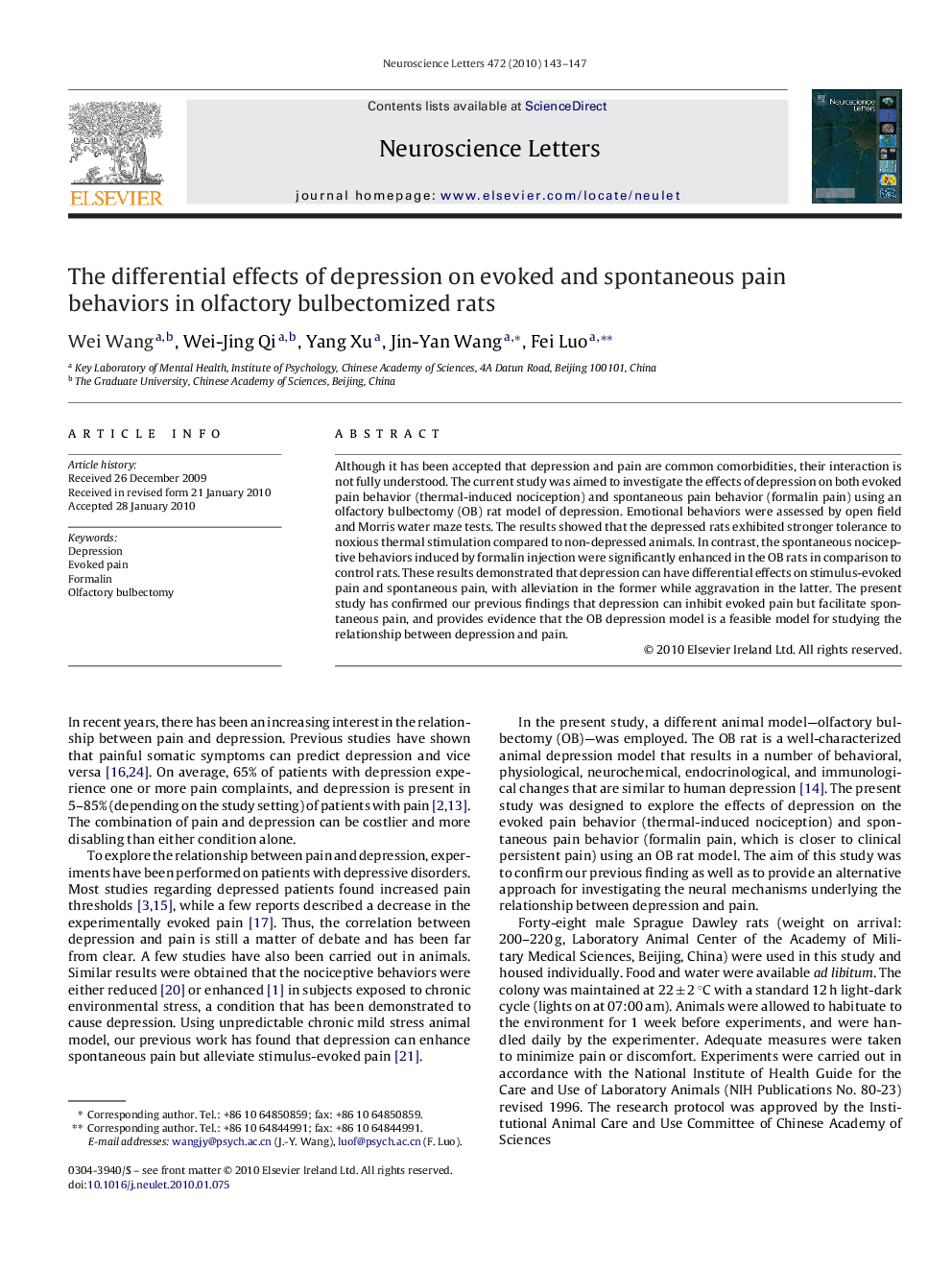| Article ID | Journal | Published Year | Pages | File Type |
|---|---|---|---|---|
| 4346806 | Neuroscience Letters | 2010 | 5 Pages |
Although it has been accepted that depression and pain are common comorbidities, their interaction is not fully understood. The current study was aimed to investigate the effects of depression on both evoked pain behavior (thermal-induced nociception) and spontaneous pain behavior (formalin pain) using an olfactory bulbectomy (OB) rat model of depression. Emotional behaviors were assessed by open field and Morris water maze tests. The results showed that the depressed rats exhibited stronger tolerance to noxious thermal stimulation compared to non-depressed animals. In contrast, the spontaneous nociceptive behaviors induced by formalin injection were significantly enhanced in the OB rats in comparison to control rats. These results demonstrated that depression can have differential effects on stimulus-evoked pain and spontaneous pain, with alleviation in the former while aggravation in the latter. The present study has confirmed our previous findings that depression can inhibit evoked pain but facilitate spontaneous pain, and provides evidence that the OB depression model is a feasible model for studying the relationship between depression and pain.
